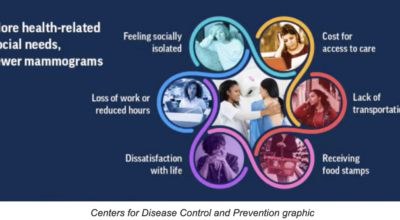MIND & BODY: Can you eat more and weigh less?
Published 3:21 pm Thursday, March 5, 2020
Have you tried to lose weight by cutting down the amount of food you eat? Do you still feel hungry and not satisfied after eating? Or have you avoided trying to lose weight because you’re afraid of feeling hungry all the time?
If so, you are not alone. Many people throw in the towel on weight loss because they feel deprived and hungry when they eat less.
There is another way. Aim for a slow, steady weight loss by decreasing calorie intake while maintaining an adequate nutrient intake and increasing physical activity. You can cut calories without eating less nutritious food. The key is to eat foods that will fill you up without eating a large amount of calories.
If I cut calories, won’t I be hungry?
Research shows that people get full by the amount of food they eat, not the number of calories they take in. You can cut calories in your favorite foods by lowering the amount of fat and or increasing the amount of fiber-rich ingredients, such as vegetables or fruit.
Let’s take macaroni and cheese as an example. The original recipe uses whole milk, butter, and full-fat cheese. This recipe has about 540 calories in one serving (1 cup).
Here’s how to remake this recipe with fewer calories and less fat:
— Use 2 cups non-fat milk instead of 2 cups whole milk.
— Use 8 ounces light cream cheese instead of 21⁄4 cups full-fat cheddar cheese.
— Use 1 tablespoon butter instead of 2 or use 2 tablespoons of soft trans-fat free margarine.
— Add about 2 cups of fresh spinach and 1 cup diced tomatoes (or any other veggie you like).
Your redesigned mac and cheese now has 315 calories in one serving (1 cup). You can eat the same amount of mac and cheese with 225 fewer calories.
What foods will fill me up?
To be able to cut calories without eating less and feeling hungry, you need to replace some higher calorie foods with foods that are lower in calories and fat and will fill you up. In general, this means foods with lots of water and fiber in them. The chart below will help you make smart food choices that are part of a healthy eating plan.
These foods will fill you up with less calories. Choose them more often.
— Fruits and vegetables (prepared without added fat)
— Spinach, broccoli, tomato, carrots, watermelon, berries, apples
— Low-fat and fat-free milk products
— Low- or fat-free milk, low or fat-free yogurt, low- or fat-free cottage cheese
— Broth-based soup
— Vegetable-based soups, soups with chicken or beef broth, tomato soups (without cream)
— Whole grains
—Brown rice, whole wheat bread, whole wheat pastas, popcorn
— Lean meat, poultry and fish
— Grilled salmon, chicken breast without skin, ground beef (lean or extra lean)
— Legumes (beans and peas)
— Black, red kidney and pinto beans (without added fat), green peas, black-eyed peas
These foods can pack more calories into each bite. Choose them less often.
— Fried foods: eggs fried in butter, fried vegetables, French fries
— Full-fat milk products: full-fat cheese, full-fat ice cream, whole and 2 percent milk
— Dry snack foods: crackers or pretzels, cookies, chips, dried fruits
— Higher-fat and higher-sugar foods: croissants, margarine, shortening and butter, doughnuts, candy bars, cakes and pastries
— Fatty cuts of meat: bacon, brisket, ground beef (regular)
A healthy eating plan is one that:
— emphasizes fruits, vegetables, whole grains and fat free or low-fat milk and milk products;
— includes lean meats, poultry, fish, beans, eggs, and nuts;
— is low in saturated fats, trans fats, cholesterol, salt (sodium) and added sugars;
— stays within your calorie needs.
Technically speaking
The number of calories in a particular amount or weight of food is called “calorie density” or “energy density.”
Low-calorie-dense foods are ones that don’t pack a lot of calories into each bite.
Foods that have a lot of water or fiber and little fat are usually low in calorie density. They will help you feel full without an unnecessary amount of calories.
Article information taken from: www.cdc.gov
Clark County Health Department provides programs for the entire family, including Medical Nutrition Therapy (weight-loss counseling, diabetes management, etc.), Diabetes Classes, Diabetes Support Group, Diabetes Prevention Program, WIC, HANDS, family planning, and well child/immunizations. For more information on all of our service, please call 859/744-4482, like us on Facebook, or visit our website at www.clarkhealthdept.org.






